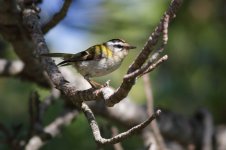EsotericForest
Survivalist
I just have a question regarding which setting you usually tend to shoot in for your wildlife photography. Do you shoot in Manual, AV, or TV most of the time? I usually did most of my shooting in TV, because otherwise I worry that my shutter speed won't be high enough to freeze frame an animal...maybe I'm not trusting my camera enough, but that is my theory. I've been really trying to step up my photography though, so I've been trying to do a lot of reading, and in the last book it said that TV is of little importance to a wildlife photographer, and that you should mainly be in AV mode. It made me start wondering if I'm doing things backwards, which could partly be why I don't get the results I want a lot of the time.
I shoot a Cannon Rebel XSI.
Regards,
Josh
I shoot a Cannon Rebel XSI.
Regards,
Josh








